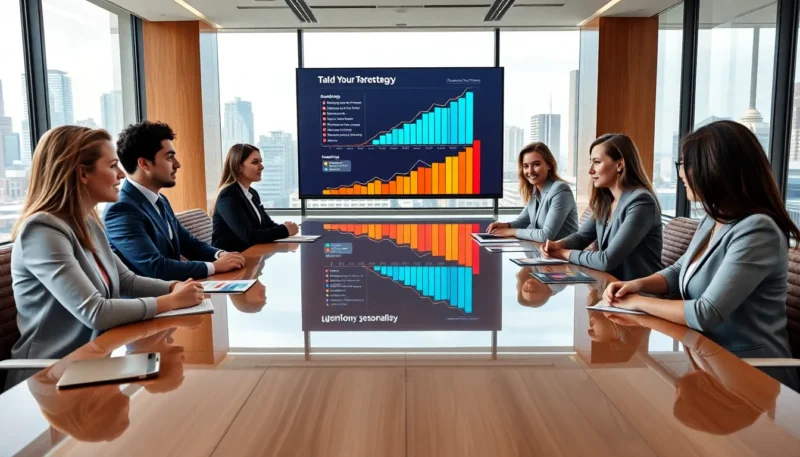Imagine walking through your dream home without ever stepping foot inside it. That’s the magic of 3D home visualization. In today’s fast-paced real estate market, buyers crave a seamless and immersive experience that traditional photos and floor plans simply can’t provide.
I’ve seen firsthand how 3D visualization transforms the way we buy and sell homes. It offers potential buyers a realistic, interactive tour, making it easier to envision living in the space. This technology not only saves time but also helps buyers make more informed decisions, ultimately revolutionizing the residential real estate landscape.
Table of Contents
ToggleBenefits of 3D Home Visualization
3D home visualization offers transformative advantages in residential real estate, providing an unparalleled, immersive experience for buyers.
Enhanced Buyer Experience
Buyers now experience high-quality real estate renderings through 3D visualization. They virtually walk through the property, understanding spatial relationships and layouts better than static photos or floor plans. This immersive approach helps them form emotional connections, making it easier to envision themselves living in the space.
Accurate Property Representation
3D visualization ensures precise and detailed property representation. Accurate dimensions, layouts, and interior features present realistic views of the homes. This precision reduces discrepancies between expectations and reality, which results in higher buyer satisfaction and fewer misunderstandings.
Time-Saving Features
3D home visualization saves significant time for both buyers and sellers. Buyers tour homes virtually, narrowing down their choices before visiting in person. This pre-selection process filters serious contenders, leading to more efficient property viewings and faster decision-making for everyone involved.
Technological Advancements in 3D Visualization
3D visualization advancements are changing the real estate industry. These developments enhance how buyers and sellers interact with properties, making the process more efficient and engaging.
Virtual Reality Integration
Virtual Reality (VR) integration offers buyers immersive experiences. VR headsets allow potential buyers to take virtual tours of properties from anywhere. This immersive approach surpasses traditional photos and videos.

High-quality real estate renderings in VR create lifelike environments. Buyers can explore rooms, understand spatial relationships, and visualize how their furnishings might fit. This level of detail aids in making informed decisions, reducing hesitations and speeding up the buying process.
Augmented Reality Applications
Augmented Reality (AR) applications overlay digital elements onto the real world. Using AR-enabled devices, buyers can visualize changes to existing spaces. For instance, AR allows potential homeowners to see how new furniture or renovations might look, enhancing their experience. High-quality real estate renderings in AR help users interact with properties on a deeper level. This capability provides a clearer understanding of the space, enhancing emotional connections and confidence in property decisions.
Impact on Real Estate Marketing Strategies
3D home visualization has transformed real estate marketing strategies by providing innovative tools that enhance buyer engagement and market reach.
Interactive Property Tours
3D home visualization offers interactive property tours that revolutionize how potential buyers explore homes. These tours use high-quality real estate renderings to create immersive virtual walkthroughs. Buyers can navigate through properties at their own pace, examining every detail without leaving their current location. This interactive approach not only saves time but also allows for a deeper understanding of the property’s layout and design, increasing engagement and interest.
Wide Reach to Potential Purchasers
3D home visualization significantly broadens the marketing reach of real estate listings. Traditional marketing methods typically limit the audience to those within the immediate vicinity or those willing to travel. With 3D tours, potential buyers from anywhere in the world can explore properties. This expansive reach helps attract a diverse pool of interested buyers, increasing the chances of a quicker sale. Moreover, high-quality real estate renderings used in these tours effectively showcase properties, capturing the attention of international buyers and investors who rely on detailed visual representations before making decisions.
Conclusion
3D home visualization is truly revolutionizing the residential real estate market. It’s changing how buyers interact with properties by offering immersive and accurate virtual experiences. This technology helps buyers make informed decisions more efficiently and confidently by providing a realistic view of potential homes.

The integration of VR and AR further enhances the buying process, allowing for deeper engagement and emotional connections with properties. Real estate marketing strategies are also evolving, reaching a broader audience and increasing the chances of quicker sales.
Overall, 3D home visualization is a game changer, transforming every aspect of the home buying journey and setting new standards in the real estate industry.





